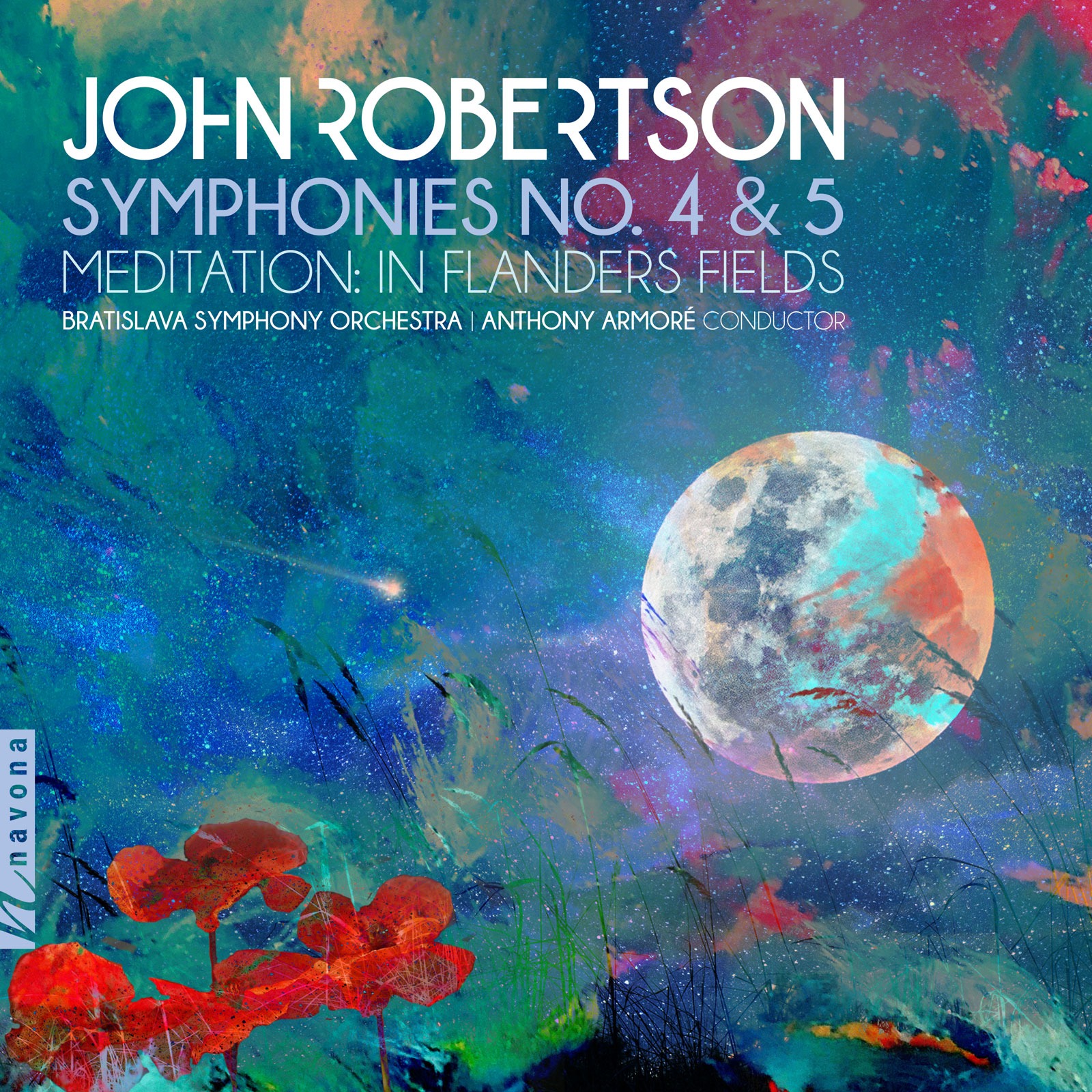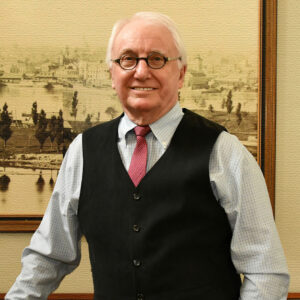
Share Album:
Symphonies No. 4 & 5
John Robertson composer
Bratislava Symphony Orchestra | Anthony Armoré composer
In an age accustomed to three-minute pop songs being the norm, does the world need more full-length symphonies? Yes, says New Zealand Canadian John Robertson with his new release, SYMPHONY NO 4 & 5. Like their predecessors, these orchestral works make no sacrifices in terms of scale and style: they aim to be grand, aesthetic compositions, and are intended to be enjoyed as such.
Symphony No. 4 and Symphony No. 5 bear the opus numbers 73 and 76, respectively – quite a feat, and even more impressive when one considers that composing wasn't Robertson's primary career. Instead, young Robertson had made the sensible choice to go into the insurance business (which, judging not only by the fate of most composers since the beginning of time, might have been rather wise). Nonetheless, the desire to invent music stuck. A competition win in 1987 eventually cemented this pastime as a worthwhile pursuit.
Like Robertson's previous symphonies (also available and released by Navona Records), No. 4 and No. 5 exhibit a strong adherence to a kind of neoclassical aesthetic, with influences of 20th-century composers sprinkled throughout. Unlike the previous orchestral works, however, these later symphonies are darker, more mature, more mysterious and generally more collected.
Nestled in between is Meditation: In Flanders Fields, op. 70, a poem colored by long, winding symphonic lines and nebulous harmonies. It's a clever choice both in terms of style and content, working perfectly as a musical palate cleanser between the larger symphonic pieces. Together, these works represent more than the sum of their parts: they aren't just unrelated compositions, but an apt snapshot of Robertson's later oeuvre.
Listen
Stream/Buy
Choose your platform
"The works are substantive and also pleasurable to hear"
Track Listing & Credits
| # | Title | Composer | Performer | |
|---|---|---|---|---|
| 01 | Symphony No. 4, Op. 73: I | John Robertson | Bratislava Symphony Orchestra | Anthony Armoré, conductor | 9:54 |
| 02 | Symphony No. 4, Op. 73: II | John Robertson | Bratislava Symphony Orchestra | Anthony Armoré, conductor | 9:49 |
| 03 | Symphony No. 4, Op. 73: III | John Robertson | Bratislava Symphony Orchestra | Anthony Armoré, conductor | 8:20 |
| 04 | Meditation, Op. 70 (In Flanders Fields) | John Robertson | Members of the Bratislava Symphony Orchestra | Anthony Armoré, conductor & narrator | 11:35 |
| 05 | Symphony No. 5, Op. 76 | John Robertson | Bratislava Symphony Orchestra | Anthony Armoré, conductor | 33:31 |
Recorded July 1-3, 5, 2019 & March 7, 2020 at Studio 1, Slovak Radio in Bratislava, Slovakia
Recording Session Producer David Hernando Rico
Recording Session Engineer Martin Roller
Executive Producer Bob Lord
Executive A&R Sam Renshaw
A&R Director Brandon MacNeil
A&R Chris Robinson
VP, Audio Production Jeff LeRoy
Audio Director Lucas Paquette
VP, Design & Marketing Brett Picknell
Art Director Ryan Harrison
Design Edward A. Fleming
Publicity Patrick Niland, Sara Warner
Artist Information

John Robertson
(Ernest) John Robertson (October 21, 1943–February 16, 2025) was born in New Zealand. His secondary school offered music as a full time subject, allowing Robertson to find his footing. Upon leaving school, he went into the insurance business where he spent his working life. He continued to compose on the side after emigrating to Canada in 1967, where he became a longtime resident.

Anthony Armoré
Born into an Italian family near New York City, Anthony Armoré had a career in the United States as a conductor before taking up residence in Europe in 2001. During studies in the United States and Europe in conducting, horn, violin, and music theory, he gained performance experience as a horn player and violinist and, later, as a conductor.
